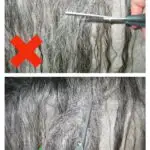Detangling a tangled and matted horse mane and tail can be a frustrating and time-consuming process- too often resulting in excessive loss of hair and thinning of the tail in the process! Before you take the nuclear option and completely roach your horse’s mane, try this method for detangling.
Below you will find illustrated instructions on how to detangle a mane relatively quickly with the absolute minimum hair loss. This method works equally well to detangle matted and knotted horse tails.
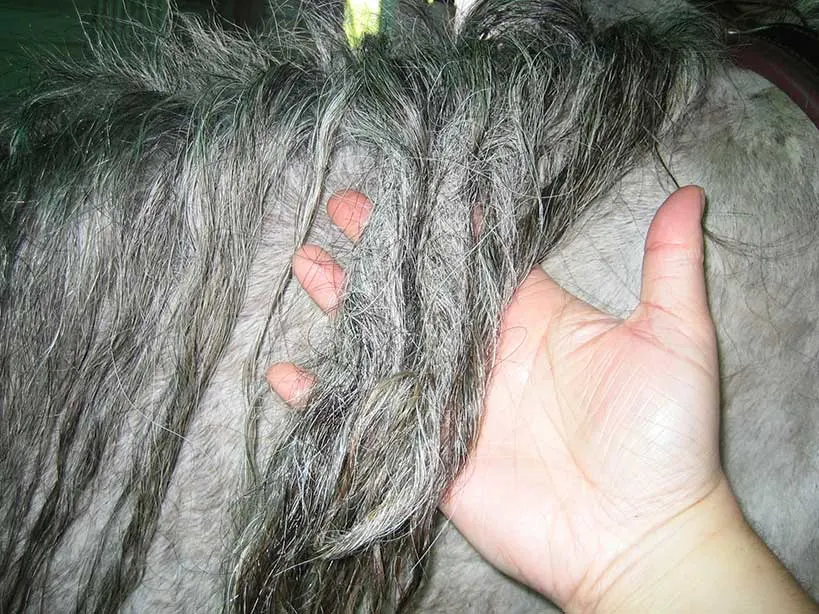
Begin by trying to isolate sections of the mane or tail. On this horse, we select one matted, tangled dreadlock of the mane to detangle first. The hair of the mane or tail should be shampooed prior to detangling if possible and rinsed thoroughly. Dirt is often what binds the tangled hair together.
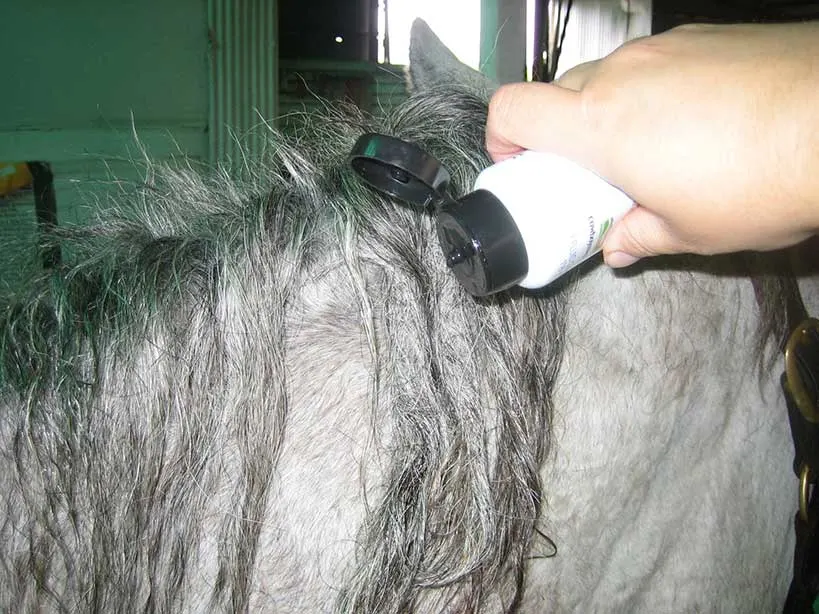
The following section may contain affiliate links. As an Amazon Associate, we earn from qualifying purchases.
Next we apply our detangler to the section of the horse’s mane that we are working on. After trying many different products, I use and recommend Cowboy Magic Horse Hair Detangler and Conditioner. If not accessible, most human grade detanglers work sufficiently. Apply very liberally- this is no place to skimp! The more you use, the less horse hair you’ll lose during detangling.
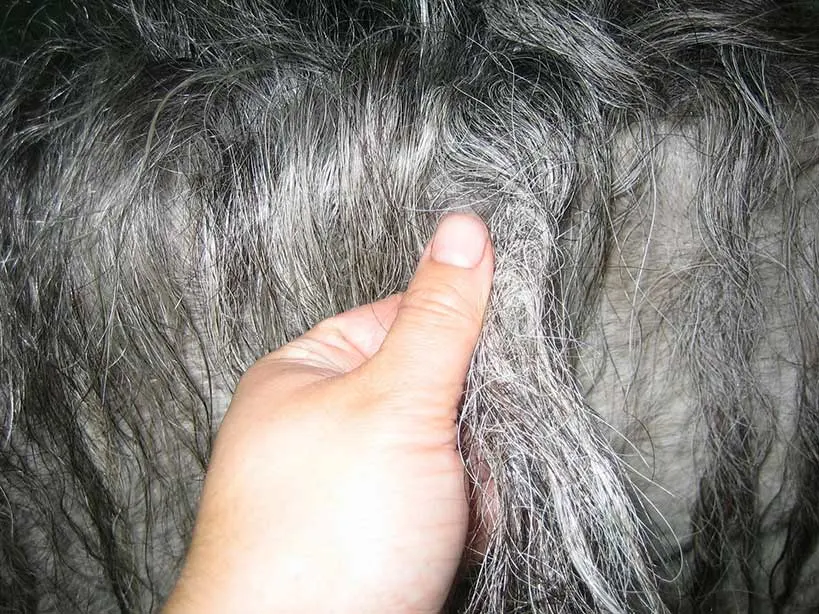
Massage detangler deep into the core of the knot or tangle.
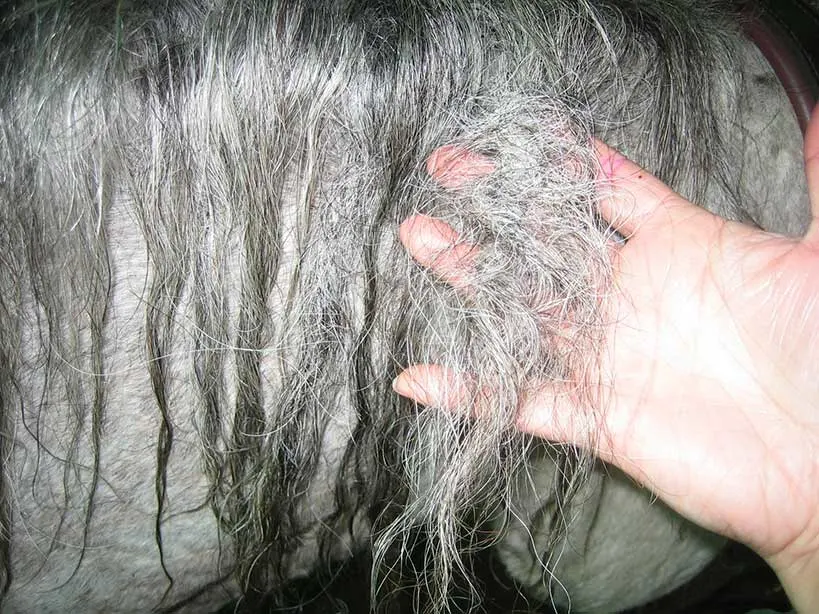
For a tangled mane or tail, try to locate the largest twisted or knotted sections of hair and follow them backwards, untying the knot. For dreadlocks or mats, grasp either side of the mat between thumb and forefinger and spread matt wide. This opens up the matt and allows you to begin finger combing from the bottom up.
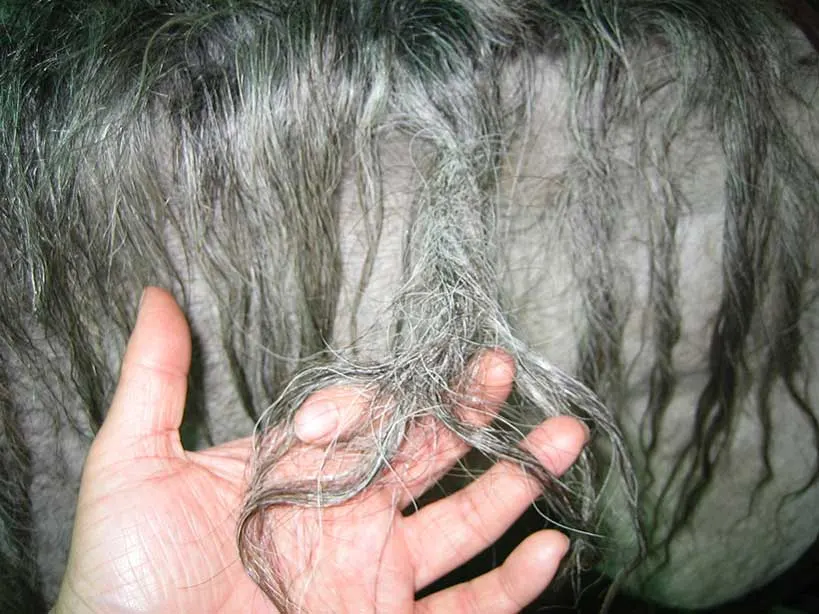
Pull individual hairs out of the matt. You’ll find a lot of hair coming loose at this point, but most is already dead hair that has been caught in the tangles.

Work on smaller and smaller sections of hair till you can finger comb through the section of mane or tail you have been working on. When you are able to finger comb entirely, start on another section with the same method.
A note on using scissors:
If you get into mats and tangles that are really impenetrable, thinning shears are handy. Traditional scissors will leave you with a detangled, but choppy-looking mane or tail. Thinning shears have jagged teeth so they don’t cut a straight line and will leave a more natural edge. To use, detangle the horse’s hair as much as possible with your fingers, then use the thinning shears parallel with the hair (up and down, not horizontal- very important) to scissor into the mat once or twice- then finger comb- then scissor once or twice, then finger-comb, etc. Thinning shears allow you to break up a matt with much less hair loss.
The only scissors we advise using are thinning shears, pictured here. AS you can see, the blade is designed not to cut straight, but only cut a fraction of the hairs in its grip. To use thinning shears, scissor UP once, finger-comb, scissor again, finger-comb again, etc. To keep the mane natural looking, always use thinning shears vertically, not horizontally, and as little as possible!

When finished, we recommend rinsing or shampooing the mane a final time if large amounts of detangler have been used- especially if used liberally up near the crest of the horse’s mane, or up on the dock of the tail (residue left in these areas can be itchy and cause a horse to rub!) To keep the mane neat, regularly comb or braid in leave-in style braids.
To prevent future tangles you may want to consider various types of leave-in braids that keep manes and tails long and luxurious without tangling.
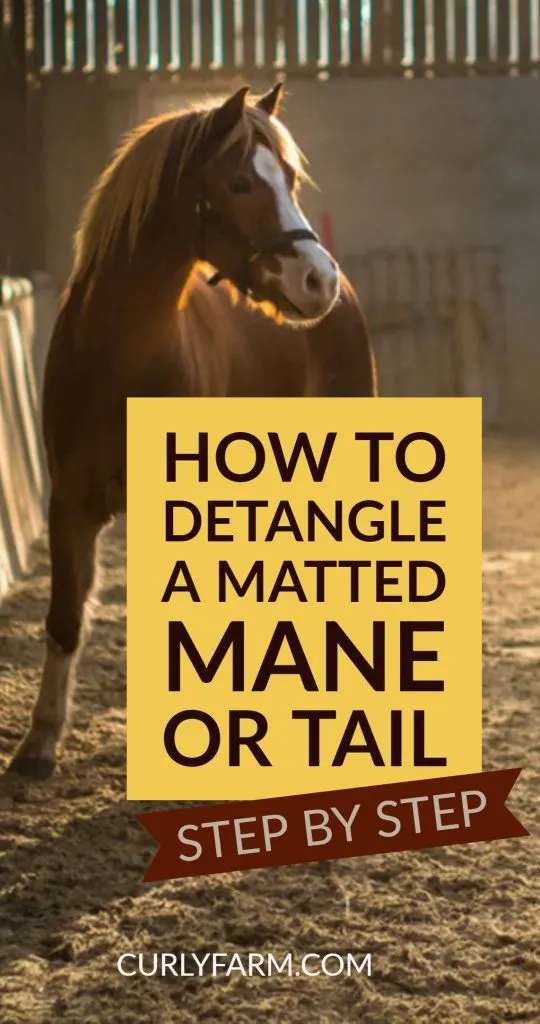
Using a Grooming Rake to Detangle Manes
One of the best ways I have found to detangle a thick tangled horse mane is by using a coat king grooming rake. Various offbrand are available, but the original Coat King is what I was introduced to when I was grooming dogs professionally back in my college days of working through school. Rather than tugging out tangles or tediously pulling manes from the root, a grooming rake can shorten grooming time, minimize damage to hair, and keep it manes neat and tidy
The coat king is a unique grooming tool (traditionally used on dogs) that works great on horse manes. It’s particularly well-suited for curly horse manes that often become tangled but don’t respond well to being fully combed out. Often, combing every last tangle out of a Bashkir Curly horse mane results in a lot of lost hair and lots of frizz- rather than achieving the desired effect of a smooth mane.
Instead, using a coat king to help manage a frizzy horse mane is really helpful. The Coat King is a unique tool because rather than just combing – which often ends up just pulling out hair – the Coat King works in a unique way to simultaneously comb and cut hair. Rather than cutting parallel to the horse’s neck, as you would with scissors (which would result in a choppy and unnatural mane) the Coat King cuts vertically downwards as you comb. This means only a small fraction of hairs are cut (and only the hairs that resist being combed smoothly downwards). On both curly horse manes and not curly horse manes, this results in a much easier grooming experience for horse and human groomer.
Horse Mane Dreadlocks
Horse manes form dreadlocks when naturally curly hair is allowed to remain uncombed and dirty. As the dirt and natural tangles of a horses mane grow bulkier, loose hair falls out or is pulled out by a horse during scratching or napping. Rather than these extra hairs falling out, hair gets stuck to the existing tangles and begins to form dreadlocks.
To prevent dreadlocks in a horses mane, simply comb your horses mane regularly. Even once a month a should be sufficient to prevent dreadlocks from forming for most horses.
Coming out dreadlocks can be tricky, because the dead hair is stuck in the dreadlocks and forming bulk in the main, a mane after coming out dreadlocks will look much thinner.
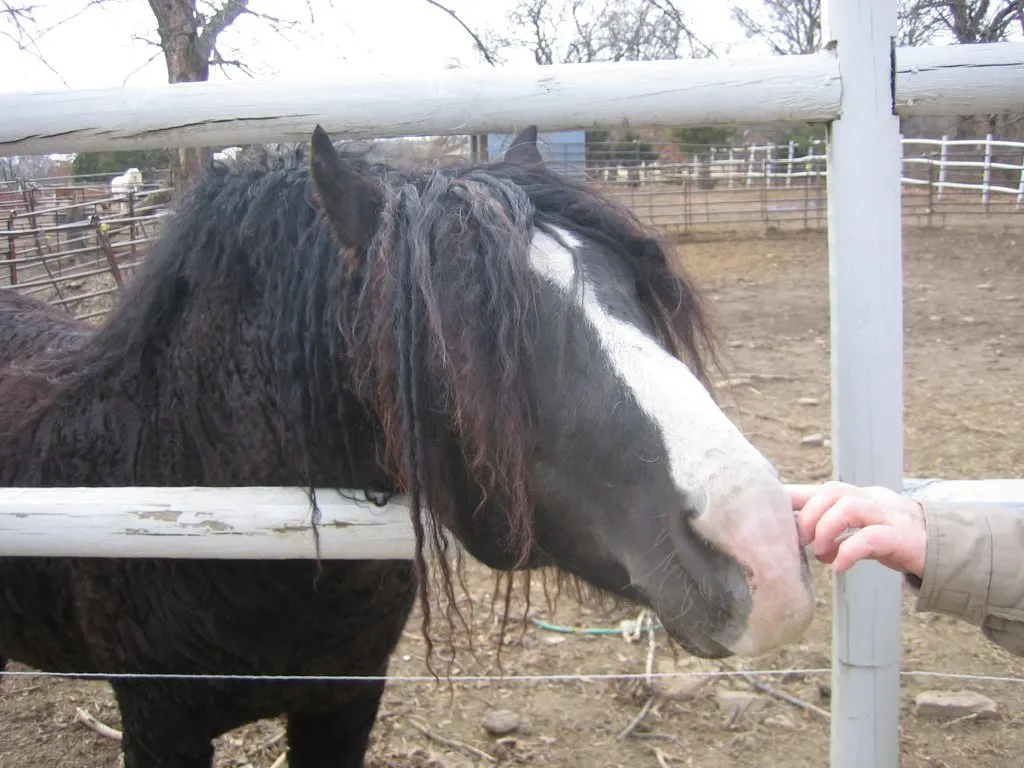
There is one breed, however, in which dreadlocks and a horse’s mean are acceptable – even for show. Curly horse manes can be so tightly curled that combing them is both an insurmountable task and only results in a frizzy mess (that seemingly instantly forms tangles as the frizz catches debris in the barn). For curly horses, the best approach for a horse with natural dreadlocks is to maintain the existing dreadlocks, making sure that they are rinsed clean regularly and trimmed as needed.

